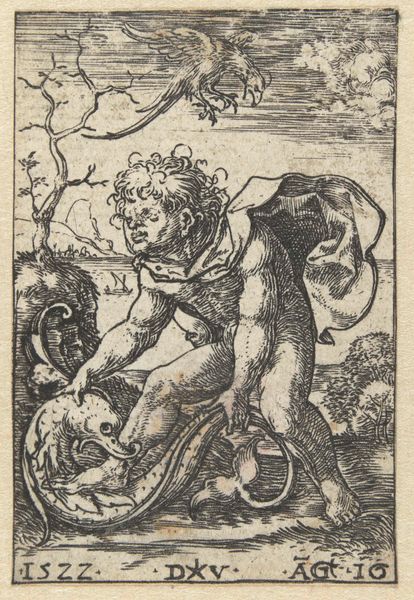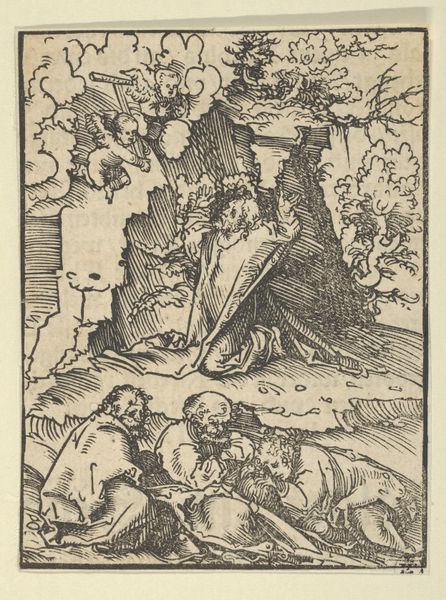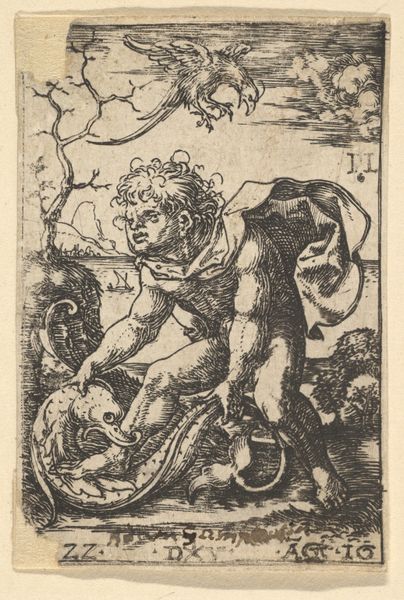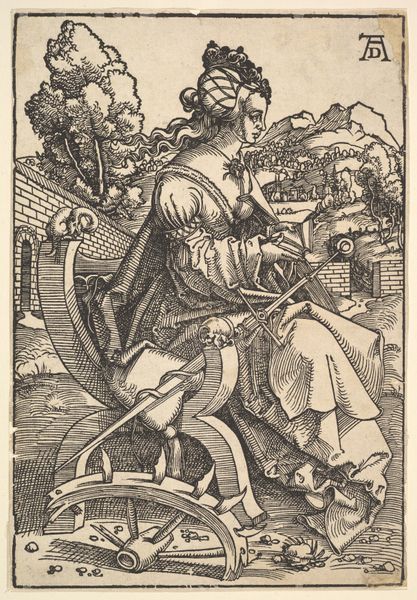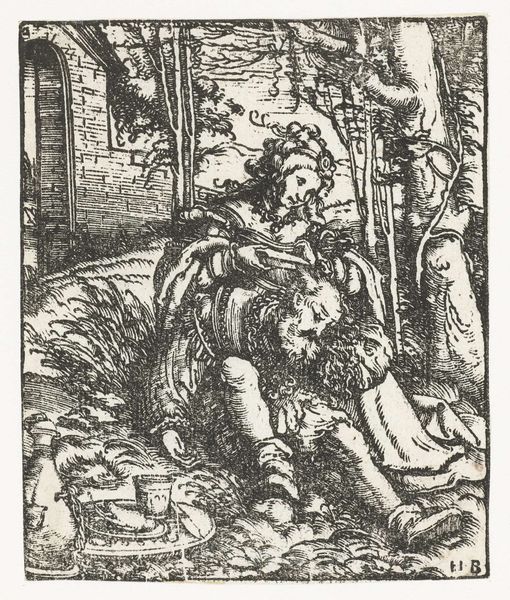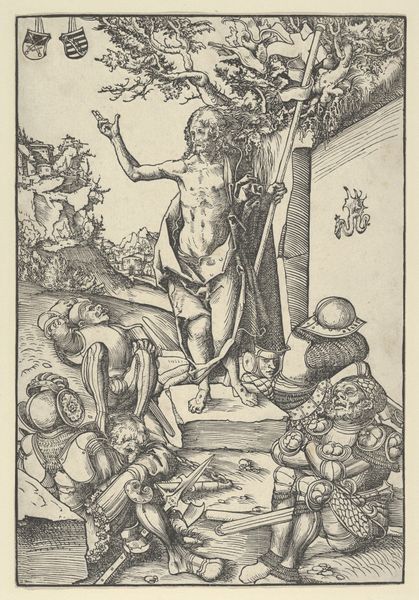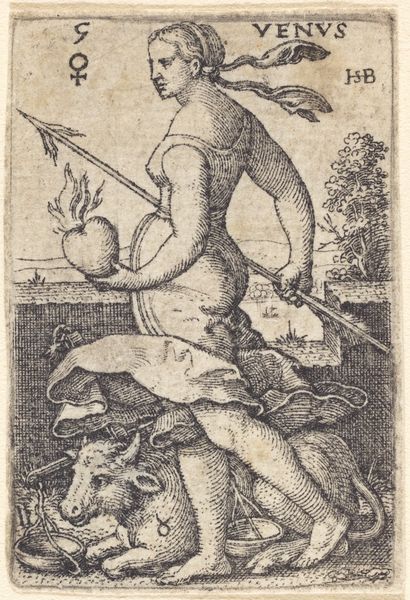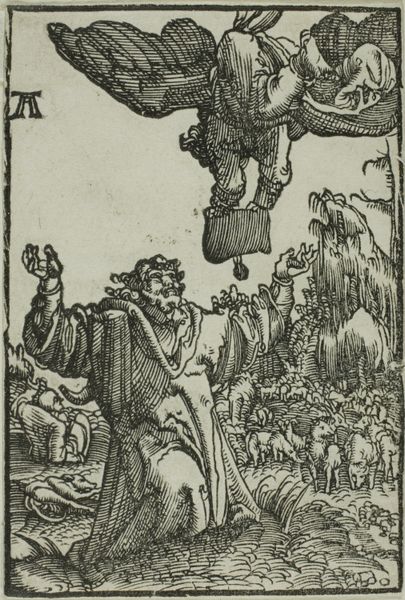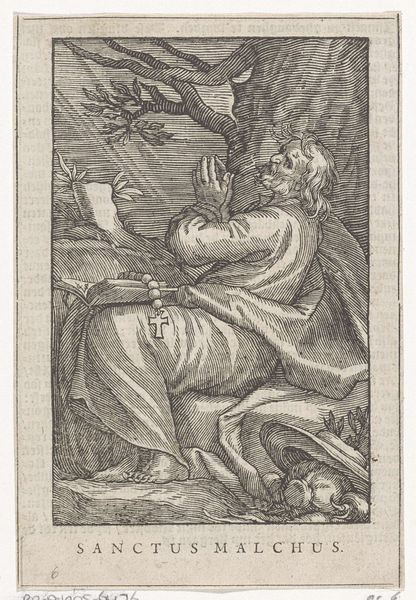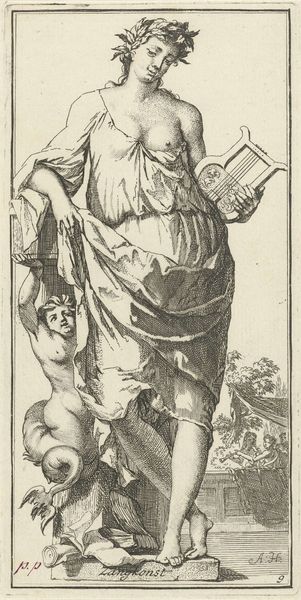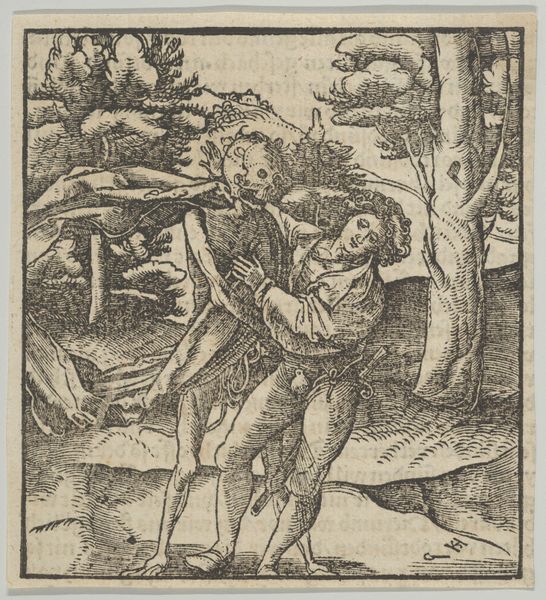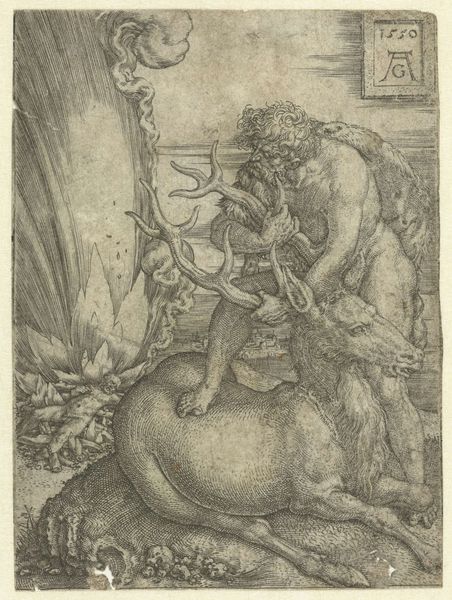
drawing, print, etching
#
drawing
#
pen drawing
# print
#
etching
#
figuration
#
11_renaissance
#
genre-painting
#
northern-renaissance
Dimensions: height 90 mm, width 57 mm
Copyright: Rijks Museum: Open Domain
Curator: Here we have "The Drunken Drummer", possibly from 1525, an etching attributed to Dirck Vellert, a Northern Renaissance artist. Editor: Well, that drummer certainly looks like he's had a few! There’s a sort of raw, unsettling energy about it. I’m immediately drawn to the very fine, almost frantic linework, particularly in the figure’s face and around the buildings. Curator: Yes, the image really captures a feeling of the time, and Dirck Vellert seemed very interested in that. During the 16th century there were emerging printmaking technologies used increasingly as a means of distributing information and stories across Europe. This falls very clearly into that socio-political background. Editor: Exactly. You can see how the etcher emphasizes the tangible effects of alcohol. The piece seems to be documenting and reflecting aspects of daily existence, as well as making visual comments using a relatively economic, reproducible medium that could reach the broader public. Curator: There's also a distinct moral dimension here, I think. Genre scenes, or daily-life depictions, are quite revealing of values when properly read. This seems cautionary; consider the placement of the subject: elevated only in the immediate sense, he risks being humiliated. The artist creates this image in the backdrop of reformation as he may have aligned to shifting ethical tides of the time. Editor: I’m interested, though, in the technical details. Look at the way the figure is perched atop that keg drum; it creates an almost precarious tension. The material itself is being emphasized as much as the morality narrative being presented to the viewer. Also, notice the detail given to the clothing, especially his pantaloons! These choices seem critical for underscoring a level of skill present in his execution as an etcher, one which had value even amidst social commentary. Curator: You make a keen point. Vellert definitely balances conveying social critique with showcasing artistry, mirroring the complex society of his day. Editor: Right! Seeing this etching helps to really engage how everyday objects like clothing or containers transform as artistic choices. The skill it requires emphasizes both manual execution and symbolic meaning embedded during its process. Curator: Indeed, this piece offers us a potent lens through which we might observe early 16th-century life, art, and societal dynamics. Editor: Definitely something I can say that I will consider during my next late night!
Comments
No comments
Be the first to comment and join the conversation on the ultimate creative platform.
